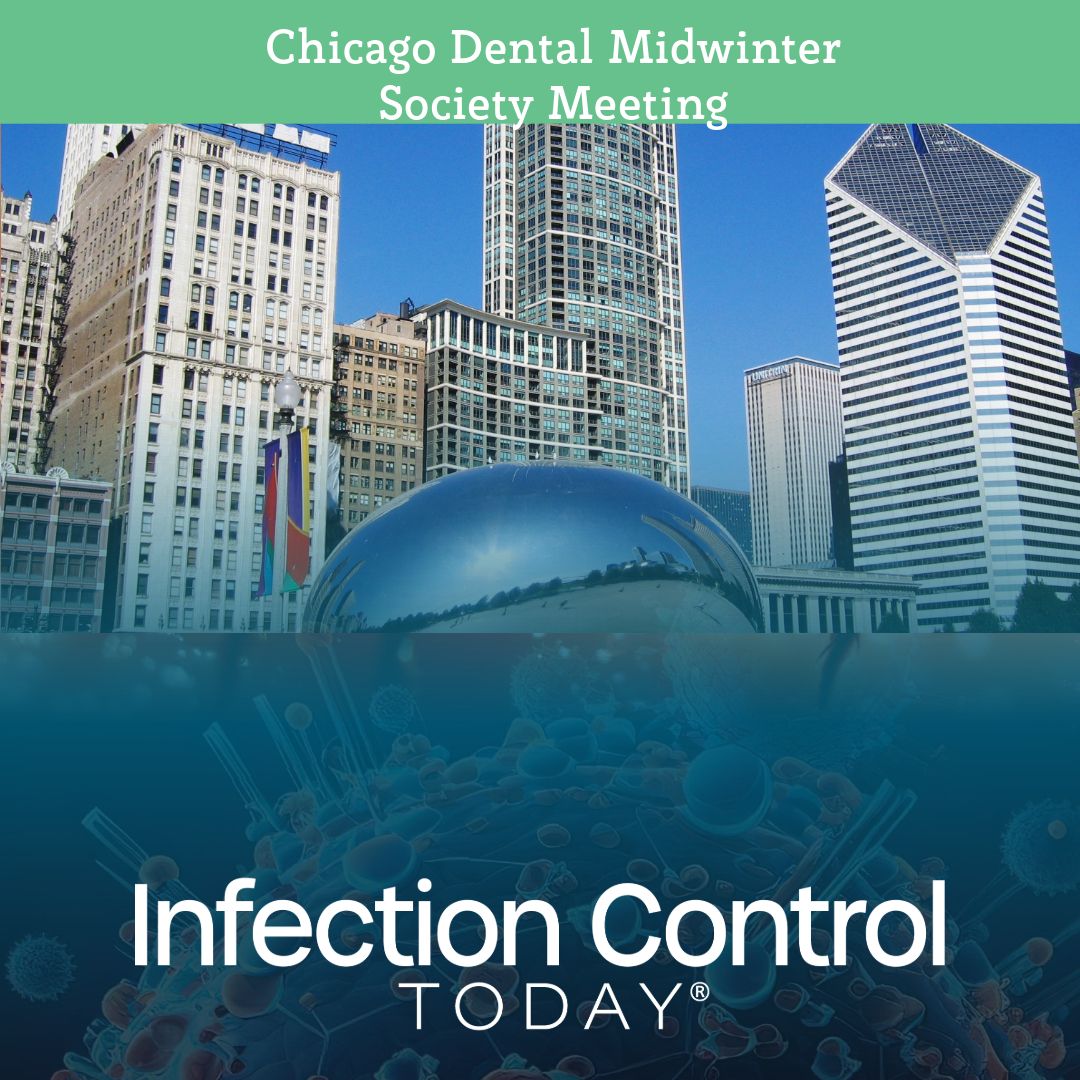Insights From the 160th Chicago Dental Society Midwinter Meeting: Innovations, Education, and Infection Control Challenges
The 160th CDS Midwinter Meeting showcased dental advancements, scientific courses, and infection control discussions, drawing nearly 25,000 attendees and highlighting innovations, oral pathology, and patient safety strategies.
Chicago’s Dental Society Midwinter Meeting
(Adobe Stock 7622055 by abricotine)

The 160th Chicago Dental Society Midwinter Meeting, held from February 19 to 22, 2025, is expected to have drawn nearly 25,000 attendees. It is regarded as one of the top three dental meetings in the US and boasts one of North America's largest exhibitor floors for dental products.
With exhibitors like ADS Dental System, Inc., Ansell Healthcare, Colgate Oral Pharmaceuticals, Heartland Dental, and W & H Group, along with 600 other exhibitors, dentists, and other dental health care workers and office staff, could find any product they wanted. From Invisalign to many glove companies, masks, chairs, and instruments. However, infection prevention and control (IPC) dental health care workers would have liked to have seen more IPC.
The Midwinter Meeting's scientific program offers an array of courses and workshops covering numerous subjects, such as social media, OSHA requirements and how they compare with CDC, practice management, best practices in patient care, new surgical techniques, CPR, pediatric dentistry, endodontics, implants, cybersecurity, hygiene, auxiliary staff training, artificial intelligence, lasers, restorative dentistry, and sleep medicine, among others.
For infection prevention topics, the Midwinter Meeting had “How to Tame Your Biofilm: A Comprehensive Approach to Periodontal Management,” presented by Amber Auger, MPH, RDH, who discussed the “proper classification of a patient’s risk factors and potential rate of progression enables the dental hygienist’s role to be fully maximized,” according to the presentation description. The presentation covered the latest science and how to create a customized protocol for each patient.
Another educational presentation was given by JoAnn Gurenlian, RDH, PhD, titled “Have You Seen This? An Overview of Oral Pathology.” This presentation discussed pathologic conditions—both benign and harmful. Gurenlian addressed lesions, infections, diseases, and systemic conditions that have oral manifestations. She covered etiologies, risk factors, differential diagnosis, and treatment that the audience members could use to protect and educate themselves and their patients.
The speaker began with rubeola (measles), which affects both children and adults. It can be prevented through vaccinations and is a highly contagious infection. Cases typically arise in winter and spring, affecting both males and females equally. The oral lesions are known as “Koplik spots” and are located on the buccal and labial mucosa. In severe cases of measles, enamel pitting (enamel hypoplasia) may occur.
Gurenlian then spoke on rubella, often called German measles, and is a togavirus. It replicates in the oropharynx and regional lymph nodes. It is also highly contagious and spreads through respiratory droplets. It has a 2 to 3-week incubation period, and the rash resolves in 3 to 5 days.
Syphilis, hand-foot-mouth disease, herpangina, tuberculosis, trauma, herpes simplex, gonorrhea, candidiasis, and others were compared for differential diagnosis. Other conditions examined were lichen planus, lupus, pemphigus, lichenoid reaction, and SCC. Others were various types of anemia and relative polycythemia.
Newsletter
Stay prepared and protected with Infection Control Today's newsletter, delivering essential updates, best practices, and expert insights for infection preventionists.
Reducing Hidden Risks: Why Sharps Injuries Still Go Unreported
July 18th 2025Despite being a well-known occupational hazard, sharps injuries continue to occur in health care facilities and are often underreported, underestimated, and inadequately addressed. A recent interview with sharps safety advocate Amanda Heitman, BSN, RN, CNOR, a perioperative educational consultant, reveals why change is overdue and what new tools and guidance can help.
New Study Explores Oral Vancomycin to Prevent C difficile Recurrence, But Questions Remain
July 17th 2025A new clinical trial explores the use of low-dose oral vancomycin to prevent Clostridioides difficile recurrence in high-risk patients taking antibiotics. While the data suggest a possible benefit, the findings stop short of statistical significance and raise red flags about vancomycin-resistant Enterococcus (VRE), underscoring the delicate balance between prevention and antimicrobial stewardship.
What Lies Beneath: Why Borescopes Are Essential for Verifying Surgical Instrument Cleanliness
July 16th 2025Despite their smooth, polished exteriors, surgical instruments often harbor dangerous contaminants deep inside their lumens. At the HSPA25 and APIC25 conferences, Cori L. Ofstead, MSPH, and her colleagues revealed why borescopes are an indispensable tool for sterile processing teams, offering the only reliable way to verify internal cleanliness and improve sterile processing effectiveness to prevent patient harm.
The Next Frontier in Infection Control: AI-Driven Operating Rooms
Published: July 15th 2025 | Updated: July 15th 2025Discover how AI-powered sensors, smart surveillance, and advanced analytics are revolutionizing infection prevention in the OR. Herman DeBoard, PhD, discusses how these technologies safeguard sterile fields, reduce SSIs, and help hospitals balance operational efficiency with patient safety.
Targeting Uncertainty: Why Pregnancy May Be the Best Time to Build Vaccine Confidence
July 15th 2025New national survey data reveal high uncertainty among pregnant individuals—especially first-time parents—about vaccinating their future children, underscoring the value of proactive engagement to strengthen infection prevention.